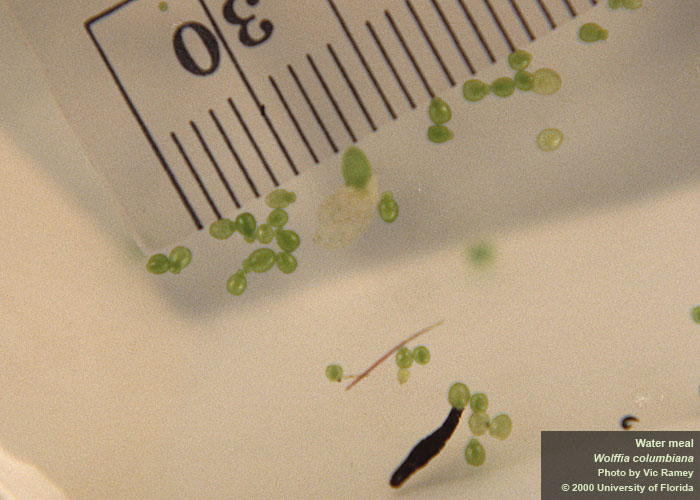
Some of the world’s smallest flowering plants grow in aquatic environments. And a number of these tiny aquatic plants grow natively right here in Florida! Aquatic plants of all kinds display an amazing array of adaptations for growing in water. They can tolerate drought, flood, flowing water, stagnant water, cold spring runs, and warm brackish marshes. They grow in sun and shade and nutrient rich to nutrient poor waters. Some of their adaptations include the ways in which they grow such as being rooted in bottom sediments, submerged, emerged, leaves floating on the surface, or completely free floating with their roots dangling into the water below.
The tiniest of aquatic plants are in this group of free floating plants. Let’s take a look at five of these tiny (less than ½ inch wide) plant species in Florida. They are most noticeable in slow moving waters, ponds, or coves protected from wind where many thousands of them form floating mats almost like paint on the water surface. Even though individual plants are small, some of these plant species are used by wildlife and invertebrates for food and cover. Oftentimes, especially in small ponds, these tiny floating plants can cover the entire water surface resulting in the need for management, especially if the ponds are used for irrigation or livestock watering.
In this article we will look at the native species, but as you are probably aware, there are also non-native representatives of these tiny plants established in our waters, but that is a story for another time…
The images and text below are from the UF/IFAS Center for Aquatic and Invasive Species website, list of Plants Sorted by Common Name.
Watermeal
“Water meal, native to Florida, is a tiny, floating, rootless plant. At 1 to 1.5 mm long, it is the smallest flowering plant on earth. It is occasionally found growing in rivers, ponds, lakes, and sloughs of the peninsula and central panhandle of Florida (Wunderlin, 2003).”
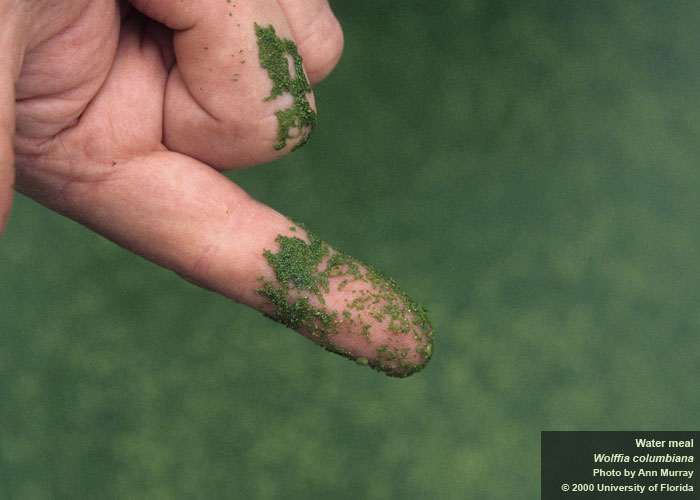
American Waterfern
“There are six species of Azolla in the world. American waterfern is the species commonly found in Florida. American waterfern is a small, free-floating fern, about one-half inch in size. It is most often found in still or sluggish waters. Young plants are, at first, a bright or grey-green. Azolla plants often turn red in color. American waterfern can quickly form large, floating mats.”

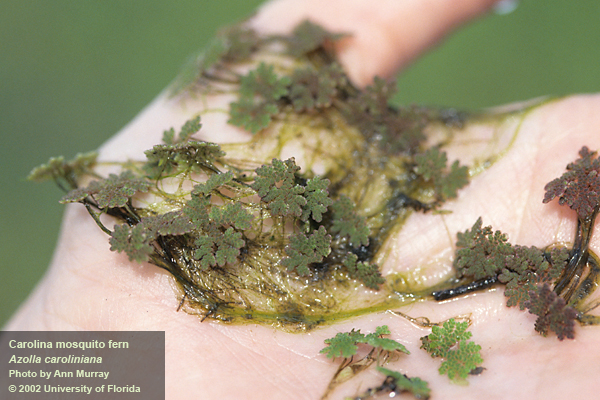
Giant Duckweed
“Giant duckweed is a native floating plant in Florida. Though very small, it is the largest of the duckweeds…..frequently found growing in rivers, ponds, lakes, and sloughs from the peninsula west to the central panhandle of Florida (Wunderlin, 2003)… Giant duckweed has two to three rounded leaves, which are usually connected. Giant duckweeds usually have several roots (up to nine) hanging beneath each leaf. The underleaf surface of giant duckweed is dark red.”
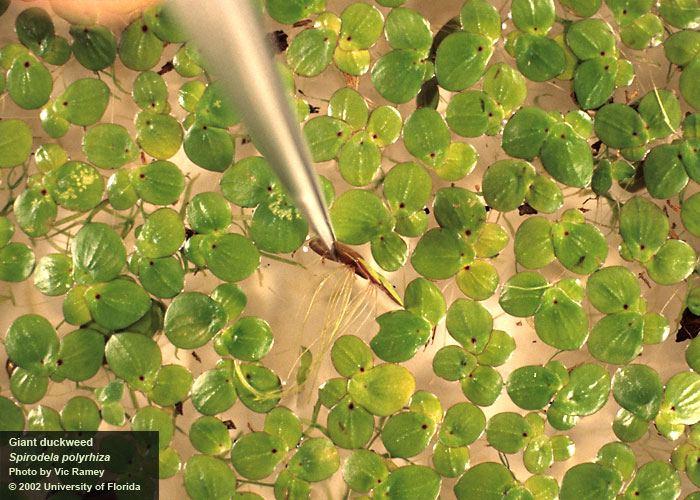
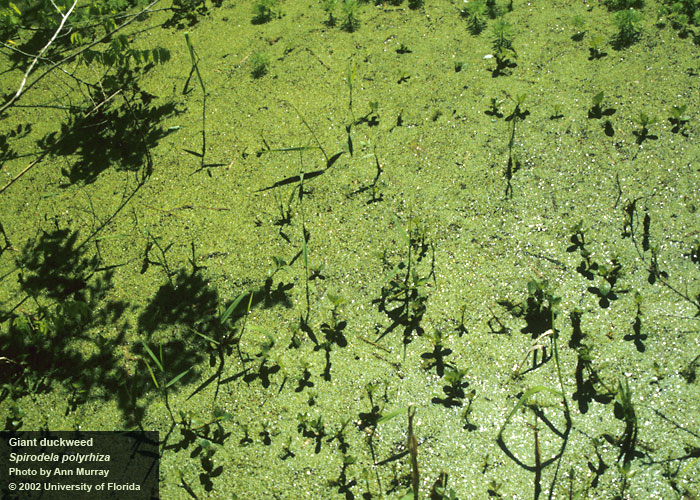
Small Duckweed
“Small duckweeds are floating plants. They are commonly found in still or sluggish waters. They often form large floating mats…. Small duckweeds are tiny (1/16 to 1/8 inch) green plants with shoe-shaped leaves. Each plant has two to several leaves joined at the base. A single root hangs beneath.”
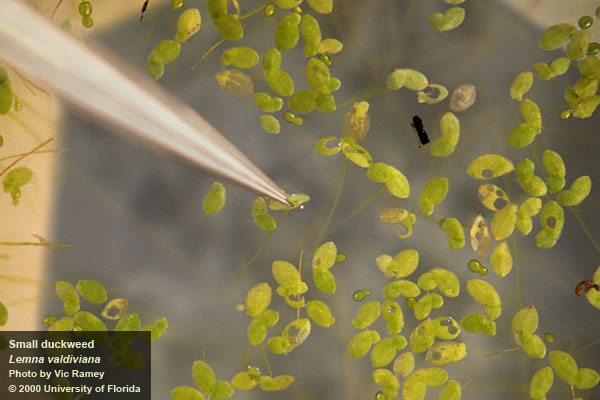
Mudmidget
“Mud-midget, native to Florida, is another small duckweed, but this one has narrow, elongated fronds. The fronds are usually connected to form starlike colonies. The fronds are 5-10 mm long; the flowers are extremely small and difficult to see. Mud-midget plants float just beneath the surface of the water and is frequently found growing in rivers, ponds, lakes, and sloughs from the peninsula west to the central panhandle of Florida (Wunderlin, 2003)….”
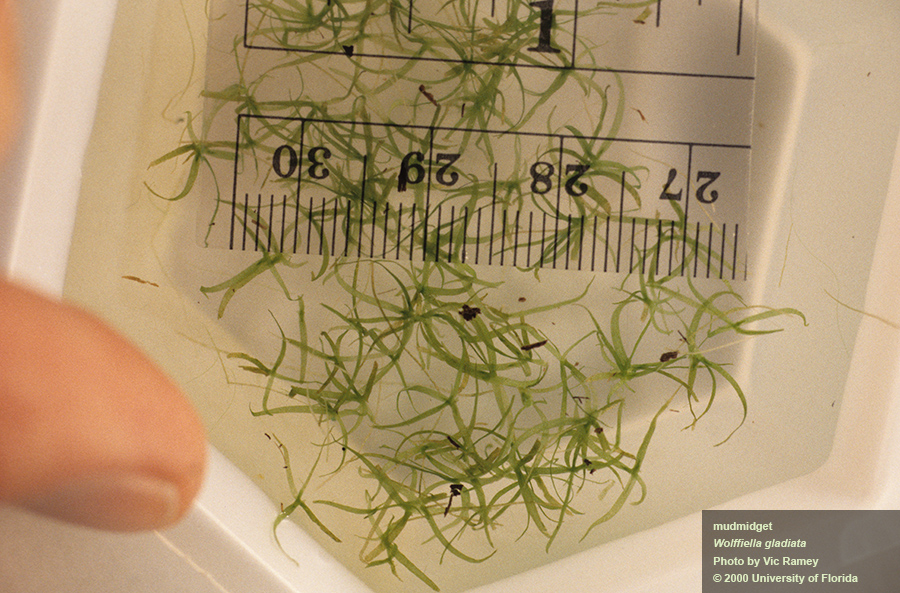
If you have any questions about aquatic plant identification or management options, please contact your local UF/IFAS Extension County office. And, for more information on Florida’s aquatic plants, please see the following resources used for this article:
UF/IFAS Center for Aquatic and Invasive Species
USDA Forest Service – Duckweed
USDA Forest Service – Water Fern
Native Aquatic and Wetland Plant Fact Sheets
Aquatic Plant Identification List with Pictures and Videos
 0
0
